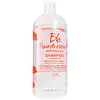What's inside
What's inside
 Key Ingredients
Key Ingredients

No key ingredients
 Benefits
Benefits

 Concerns
Concerns

 Ingredients Side-by-side
Ingredients Side-by-side

Water
Skin ConditioningDisodium Laureth Sulfosuccinate
CleansingSodium Cocoyl Isethionate
CleansingSodium Lauryl Sulfoacetate
CleansingGlycerin
HumectantSodium Lauroyl Sarcosinate
CleansingCoco-Betaine
CleansingAcrylates Copolymer
Decyl Glucoside
CleansingButylene Glycol
HumectantLaureth-23
CleansingGlycol Distearate
EmollientGlycereth-26
HumectantVitis Vinifera Seed Oil
EmollientPrunus Amygdalus Dulcis Oil
Skin ConditioningMacadamia Integrifolia Seed Oil
Skin ConditioningCocos Nucifera Oil
MaskingGardenia Taitensis Flower Extract
Skin ConditioningArgania Spinosa Kernel Oil
EmollientCarthamus Tinctorius Seed Oil
MaskingSodium Hyaluronate
HumectantHydroxypropyltrimonium Hydrolyzed Corn Starch
Phenyl Trimethicone
Skin ConditioningPanthenyl Ethyl Ether
Magnesium Nitrate
Sodium PCA
HumectantPantethine
EmollientPolyquaternium-7
Polyquaternium-10
Sodium Acetate
BufferingIsopropyl Alcohol
SolventPotassium Hydroxide
BufferingLaureth-3
EmulsifyingTrisodium Sulfosuccinate
BufferingGlycol Stearate
EmollientSodium Chloride
MaskingSodium Sulfate
Parfum
MaskingLinalool
PerfumingHexyl Cinnamal
PerfumingTetrasodium EDTA
Sodium Citrate
BufferingPhenoxyethanol
PreservativeMethylchloroisothiazolinone
PreservativeMethylisothiazolinone
PreservativeSodium Benzoate
MaskingWater, Disodium Laureth Sulfosuccinate, Sodium Cocoyl Isethionate, Sodium Lauryl Sulfoacetate, Glycerin, Sodium Lauroyl Sarcosinate, Coco-Betaine, Acrylates Copolymer, Decyl Glucoside, Butylene Glycol, Laureth-23, Glycol Distearate, Glycereth-26, Vitis Vinifera Seed Oil, Prunus Amygdalus Dulcis Oil, Macadamia Integrifolia Seed Oil, Cocos Nucifera Oil, Gardenia Taitensis Flower Extract, Argania Spinosa Kernel Oil, Carthamus Tinctorius Seed Oil, Sodium Hyaluronate, Hydroxypropyltrimonium Hydrolyzed Corn Starch, Phenyl Trimethicone, Panthenyl Ethyl Ether, Magnesium Nitrate, Sodium PCA, Pantethine, Polyquaternium-7, Polyquaternium-10, Sodium Acetate, Isopropyl Alcohol, Potassium Hydroxide, Laureth-3, Trisodium Sulfosuccinate, Glycol Stearate, Sodium Chloride, Sodium Sulfate, Parfum, Linalool, Hexyl Cinnamal, Tetrasodium EDTA, Sodium Citrate, Phenoxyethanol, Methylchloroisothiazolinone, Methylisothiazolinone, Sodium Benzoate
Water
Skin ConditioningCocos Nucifera Oil
MaskingAmodimethicone
Polyquaternium-37
Phenoxyethanol
PreservativePropylene Glycol Dicaprylate/Dicaprate
EmollientParfum
MaskingAcetamide Mea
HumectantLactamide Mea
HumectantDimethicone PEG-7 Phosphate
CleansingPPG-1 Trideceth-6
Skin ConditioningTrideceth-6
EmulsifyingBehentrimonium Chloride
PreservativeXylose
HumectantLactic Acid
BufferingEthylhexylglycerin
Skin ConditioningCetrimonium Chloride
AntimicrobialHydrolyzed Vegetable Protein Pg-Propyl Silanetriol
Skin ConditioningCitronellol
PerfumingGeraniol
PerfumingLinalool
PerfumingAlpha-Isomethyl Ionone
PerfumingViola Odorata Extract
Skin ConditioningViola Odorata Flower/Leaf Extract
MaskingSodium Hydroxide
BufferingWater, Cocos Nucifera Oil, Amodimethicone, Polyquaternium-37, Phenoxyethanol, Propylene Glycol Dicaprylate/Dicaprate, Parfum, Acetamide Mea, Lactamide Mea, Dimethicone PEG-7 Phosphate, PPG-1 Trideceth-6, Trideceth-6, Behentrimonium Chloride, Xylose, Lactic Acid, Ethylhexylglycerin, Cetrimonium Chloride, Hydrolyzed Vegetable Protein Pg-Propyl Silanetriol, Citronellol, Geraniol, Linalool, Alpha-Isomethyl Ionone, Viola Odorata Extract, Viola Odorata Flower/Leaf Extract, Sodium Hydroxide
 Reviews
Reviews

Ingredients Explained
These ingredients are found in both products.
Ingredients higher up in an ingredient list are typically present in a larger amount.
Cocos Nucifera Oil is obtained from the kernels of the coconut fruit. In other words, this is coconut oil.
Coconut Oil is rich in fatty acids with lauric acid making up the majority of these. It also contains linoleic acid. Due to this high fatty acid content, coconut oil helps trap moisture and soften skin.
Despite being antibacterial, coconut oil may not be great for acne-prone skin. It is comedogenic and may clog pores. This ingredient may not be safe for malassezia or fungal acne.
Note: Coconut Oil should not replace your sunscreen for UV protection. Studies show it only blocks about 20% of UV.
This oil is non-volatile and has a light scent.
The term 'fragrance' is not regulated in many countries. In many cases, it is up to the brand to define this term. For instance, many brands choose to label themselves as "fragrance-free" because they are not using synthetic fragrances. However, their products may still contain ingredients such as essential oils that are considered a fragrance.
Learn more about Cocos Nucifera OilLinalool is a fragrance and helps add scent to products. It's derived from common plants such as cinnamon, mint, citrus, and lavender.
Like Limonene, this ingredient oxidizes when exposed to air. Oxidized linalool can cause allergies and skin sensitivity.
This ingredient has a scent that is floral, spicy tropical, and citrus-like.
Learn more about LinaloolParfum is a catch-all term for an ingredient or more that is used to give a scent to products.
Also called "fragrance", this ingredient can be a blend of hundreds of chemicals or plant oils. This means every product with "fragrance" or "parfum" in the ingredients list is a different mixture.
For instance, Habanolide is a proprietary trade name for a specific aroma chemical. When used as a fragrance ingredient in cosmetics, most aroma chemicals fall under the broad labeling category of “FRAGRANCE” or “PARFUM” according to EU and US regulations.
The term 'parfum' or 'fragrance' is not regulated in many countries. In many cases, it is up to the brand to define this term.
For instance, many brands choose to label themselves as "fragrance-free" because they are not using synthetic fragrances. However, their products may still contain ingredients such as essential oils that are considered a fragrance by INCI standards.
One example is Calendula flower extract. Calendula is an essential oil that still imparts a scent or 'fragrance'.
Depending on the blend, the ingredients in the mixture can cause allergies and sensitivities on the skin. Some ingredients that are known EU allergens include linalool and citronellol.
Parfum can also be used to mask or cover an unpleasant scent.
The bottom line is: not all fragrances/parfum/ingredients are created equally. If you are worried about fragrances, we recommend taking a closer look at an ingredient. And of course, we always recommend speaking with a professional.
Learn more about ParfumPhenoxyethanol is a preservative that has germicide, antimicrobial, and aromatic properties. Studies show that phenoxyethanol can prevent microbial growth. By itself, it has a scent that is similar to that of a rose.
It's often used in formulations along with Caprylyl Glycol to preserve the shelf life of products.
Water. It's the most common cosmetic ingredient of all. You'll usually see it at the top of ingredient lists, meaning that it makes up the largest part of the product.
So why is it so popular? Water most often acts as a solvent - this means that it helps dissolve other ingredients into the formulation.
You'll also recognize water as that liquid we all need to stay alive. If you see this, drink a glass of water. Stay hydrated!
Learn more about Water